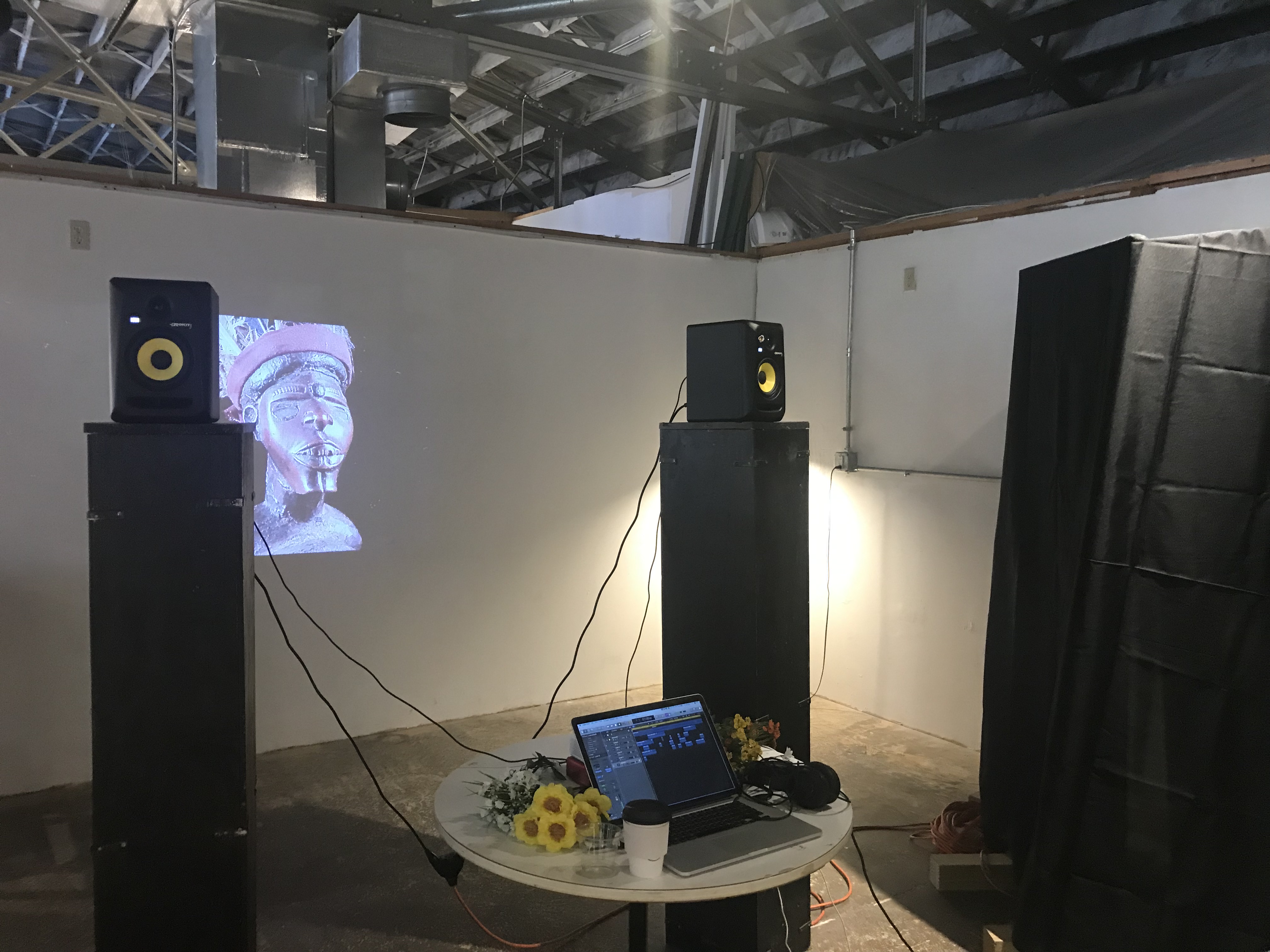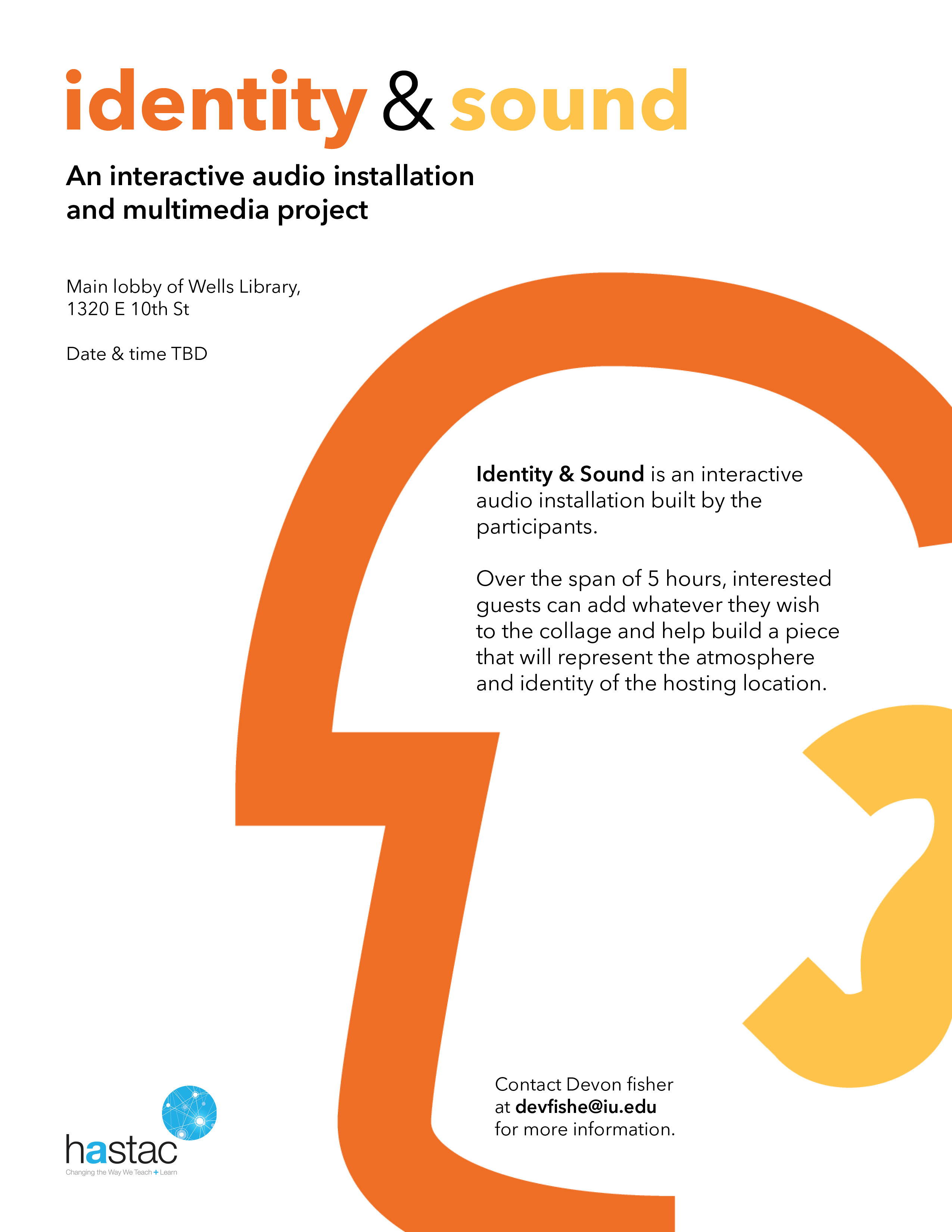IDENTITY & SOUND
Identity & Sound is an interactive audio installation that allows for participants to build an audio collage live that will be played out loud and looped for the entirety of the installation. The project is expected to last roughly five hours (12PM-5PM for most business, 7PM-12AM if the location does most of its business in the evening, such as a bar).The resulting audio will be 20 minutes for each location, allowing the recording to loop 15 times.
Over the course of the five-hour event, interested guests can add whatever they wish to the collage after signing a consent form that included questions about how they felt about the event (like or dislike) and how much time they spent/planned to spend in the space itself. For the privacy of the participants, the question portion of the consent form is anonymous, and each voice is treated with pitch alteration and will be layered with other voices later in the event due to the looping audio.
Once the project is finished, the audio data is used to determine the different ways space and social norms influence the behavior of individuals, and how that behavior, like a fingerprint, forms a unique atmosphere and identity for each location. The culminating event at the HASTAC Spring Symposium originally included a version of the installation held on location, the ability to hear the loops from different locations, and a visual comparison of each locations wave forms (with time and visitor data displayed along with it, to compare the results of the questionnaires and consent forms in each location).
When approaching the formation of the project, I based the idea on a previous project that I installed in the I Fell Gallery. The project lasted 1.5 hours, resulting in 10 minutes of audio and 24 interactions over that span of time. The initial individuals were hesitant, speaking quietly and asking a number of questions about the technical process, but as more people filled the space, participants interacted more frequently and at louder volumes. This resulted in an audio track that represented the space itself, with occasional talking and whispering, but no yelling or attempts to break the norm. This original project, however, included an underlying audio college of music and talking to begin with. This base layer, I believe, distorted the potential for more concrete data and swayed the participants from the beginning to add something that “fit” the established atmosphere. The base layer has been removed from further instance for that reason.
The original installation pushed me towards finding other scenarios to install this project, specifically public transit lobbies, bars, and coffee shops. Each location would result in different audio tracksthat can be compared and will yield data for each place. Leading up to the planned installation dates, I spent time in a variety of locations observing occupants in each space to see how long they spent there on average and if they came in groups or alone. My hypothesis based on this data was that coffee shops would be slower, featuring individuals or pairs, creating a calmer final product, bars would be more consistent and loud, and lobbies would be the loudest in terms of ambient volume, but I would receive the lowest amount of interactions due to how little time people spend in the space. My hope was that over the course of installing in these different locations, I would experience a range of participation, hopefully resulting in at least one installation receiving zero to minimal interest, just the ambient sound of the space (I expected this result would come from the coffee shop), displaying the potential for success of the project even if it did not receive direct interaction.
These results were anticipated, but the interesting aspects of the project would manifest when tracking the times and the frequency of interactions afterward to determine how much attention an event can gather interest in each space. Fora practical application of this project, the results of the consent form and the level of interaction can be used to gather how the occupants of a space are impacted by events hosted at the location, if it’s productive for the performer/artist or garners positive attention for the business itself.
Overall, the project focuses on the way social norms and our expectations for a space can influence our experience within it. However, due to recent events, the project became quite derailed. As the description states, the installation relies on interactions from passersby in public spaces and focuses on the naturally occurring atmosphere that manifests in normal conditions. This shifted the focus away from the installations themselves and towards finding similar projects that involved unique forms of atmosphere manipulation and audience participation to learn of new ways to implement this project in the future.
After doing some research, I found two audio installations that attempt to reach similar places emotionally, but through different means. Streetscape Symphony is a collaborative installation at the Garis & Hahn Gallery where participants can determine which sounds of New York City play based on their interactions, forming their experiences in the gallery around their connections to the other spaces [1]. This connection to sound is one of the driving forces in the project, especially when comparing the sounds of one location to anotherat the Symposium.
Another important influence, one that inspired the original installation in the I Fell Gallery, is Terrain by Julianne Swartz, another project that studies atmosphere and audioscapes [2]. The participant enters the space and is surrounded by the gentle atmosphere produced by the piece, swaying our emotions about an otherwise blank room toward warmth and comfort. This idea of audio being able to shape the entire feeling of a space is a major part in analyzing and displaying the results. When showing the final product at the Symposium, the intention originally involved playing the audio out loud of another location, artificially altering the atmosphere surrounding the installation to reflect another location that this project took place in. By doing that, the intention would be to shift the willingness of a participant, giving the Symposium’s installation a final result that reflects different behaviors at different times, testing the importance of audio and an audioscapes influence on the listener. Without installing, though, it’s difficult to anticipate the results of the installation at the Symposium, but with future installations in this series, gathering data will further reflect the influence of audio in a public setting.
Work Cited:
[1] Zerza, Bettina, et al. “Streetscape Symphony.”Streetscape Symphony :: IDEAS CITY, www.newmuseum.org/ideascity/view/streetscape-symphony.
[2] Swartz, Julianne. “Terrain.”Indianapolis Museum of Art Online Collection, collection.imamuseum.org/artwork/37529/.



